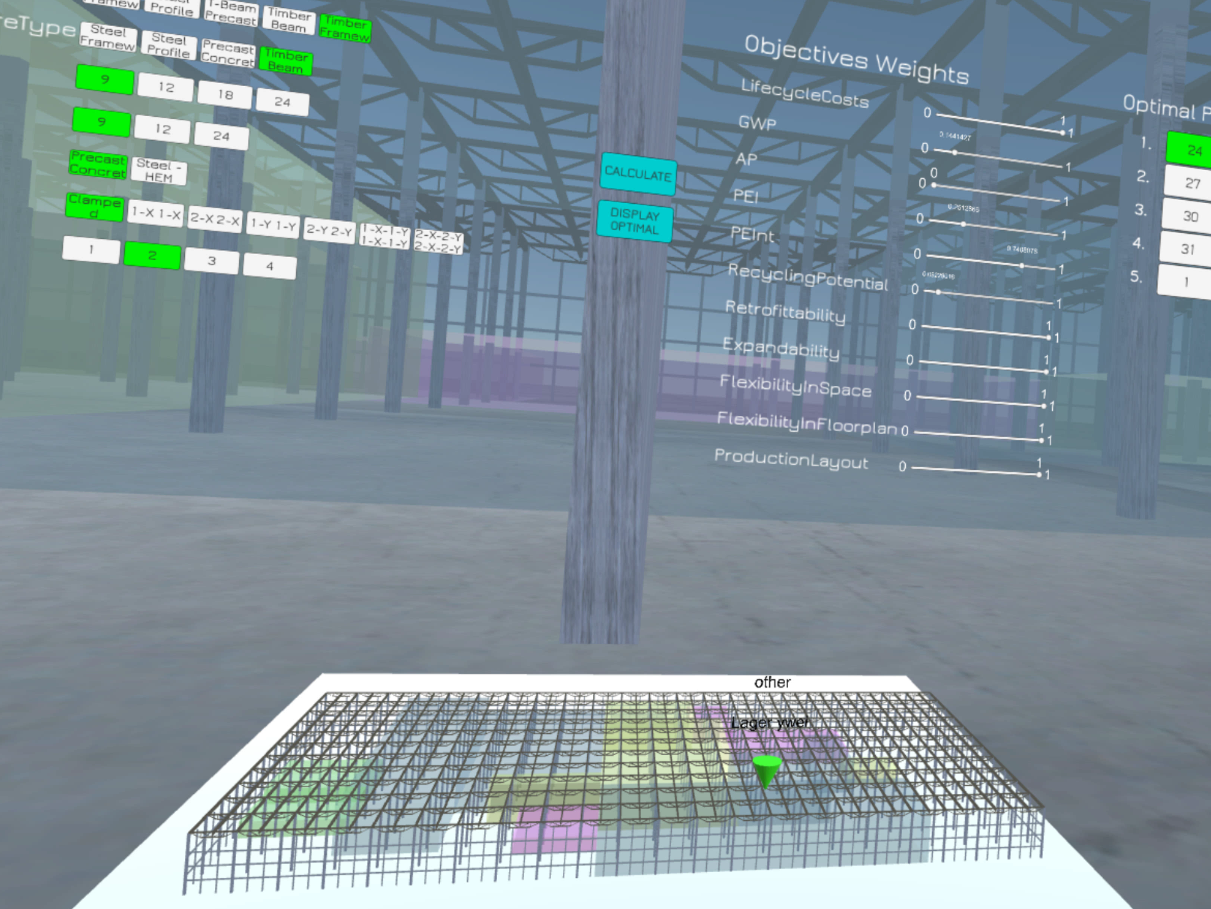Abstract
Integrated Industrial Building Design is based on collaborative decision making and coupling of discipline-specific tools. This process is subject to following problems: 1. Conflicting stakeholder goals and absence of effective communication workflows during early design stage, 2. Industrial building structures often lack flexibility for future production changes; once a building has been designed for a certain production type it cannot be used for other production types 3. No performance feedback in terms of life cycle cost (LCC), life cycle assessment (LCA), recycling potential and flexibility in early structural design. Interdisciplinary optimization and decision making tools in virtual reality providing collaborative visualization and enable variant studies within design meetings are lacking. We propose a Virtual Reality-based optimization and decision-making framework. Multidisciplinary stakeholders can collaboratively change parameters related to structural and production planning and observe changes in the performance of the building design in real-time. This way, the limitations posed by different planning components and potential compromises can be easily explored by all stakeholders. The VR framework is coupled to an automated background structural optimization process that considers production layout planning and gives feedback to LCC, LCA, recycling potential and flexibility assessment. This paper presents the VR framework for integrated industrial building meetings for early design stage. The framework builds on our previous studies conducted in the funded research project BIMFlexi. The parametric design approach, integrating production planning and structural design with automated calculation of the load-bearing structure and simultaneous assessment of LCC, LCA, recycling potential and flexibility, has already been presented. The VR framework, based on Grasshopper for Rhino3D (parametric) and Unity3D (VR), is tested within a pilot evaluation with multidisciplinary teams to extend the workflow towards improved collaboration and visualization. Forty industry professionals (architects, civil engineers, and production planners) tested the framework and were then interviewed about the usability, VR navigation, collaboration, and decision-making experience using the VR-tool. The results of the expert interviews are finally supplemented with findings from literature to develop the holistic VR workflow for early stage industrial building design meetings.
Reference
Reisinger, J., Podkosova, I., Kovacic, I., & Kaufmann, H. (2022). Evaluation of a Real-time Optimization and Decision Making Framework in Virtual Reality for Life Cycle Analysis of Flexible Industrial Building Structures Incoporating Production Processes. In 17th sdewes Conference Paphos 2022, Book of Abstracts (pp. 279–279). http://hdl.handle.net/20.500.12708/142189

